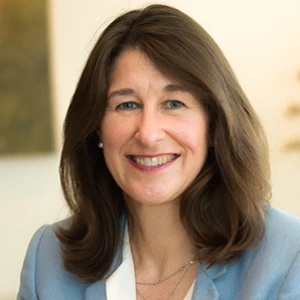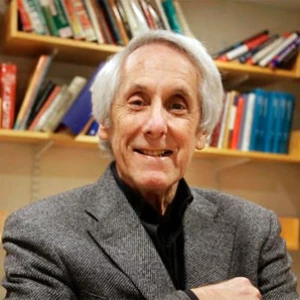Over the past decade, something remarkable happened in the fight to defeat malaria. After a long, dismal period in which no progress was made, the campaign underwent a transformation and emerged as a success story.
How did the turnaround happen, and what lessons can be learned? The story provides important pointers on how politics, public relations, leadership, and science can work together to produce change.
The groundwork for the turnaround began to be laid in 1998 when a coalition of organizations launched the Roll Back Malaria Partnership (RBM) with the ambitious goal of cutting in half the number of malaria deaths in sub-Saharan Africa by 2010.
Two years later, African heads of state came together and issued the Abuja Declaration, endorsing RBM’s goal and pledging to make it a top priority of their governments.
Around this time, scientists were making advances in developing ways of treating and preventing the disease.
These advances included a powerful drug (based on ancient Chinese medicine) and ingenious methods for embedding insecticide in the fibers of bed nets to create long-lasting nets with an effective lifespan of several years. Companies stepped up and made important contributions to the malaria effort, including Novartis, Sumitomo, Vestergaard Frandsen, and ExxonMobil.
The growing prominence of malaria led to its inclusion as one of three diseases designated to receive financial support from the Global Fund to Fight Aids, Tuberculosis and Malaria . This innovative funding mechanism, established in 2002, grew to become the largest funder for treatment and prevention of the disease.
Despite these important accomplishments, all was not well.
Seven years after the creation of RBM, there was still scant progress in reducing the burden of malaria. The coalition suffered from endless squabbles over the best way to proceed, and the World Bank held back promised funding.
A 2005 editorial in the British medical journal The Lancet warned that RBM was on a path to “ become a calamitous tale of missed opportunities, squandered funds, and wasted political will .”
Across the Atlantic, The New York Times newspaper weighed in with a withering editorial on “ How Not to Roll Back Malaria .”
Negative publicity, combined with important developments—such as the availability of new technologies and the growing prospects for funding—galvanized the coalition.
RBM made big efforts to improve its effectiveness. Huge sums of money were raised; and a batch of influential champions joined the effort, including George W. Bush, Gordon Brown, Bill and Melinda Gates, and Ray Chambers—a philanthropist-businessman whose hand guided several significant developments.
African heads of state created the African Leaders Malaria Alliance to coordinate efforts and overcome bureaucratic, policy, and logistical obstacles in the malaria-endemic region.
Today, malaria deaths are declining, and if momentum is sustained—a big “if”—nearly all malaria deaths could be eliminated by 2015.
A big political breakthrough came from the White House in July 2005.
President George W. Bush was under pressure from Tony Blair and others to bring to the G-8 Summit in Gleneagles a meaningful U.S. commitment to tackling third-world poverty and climate change.
With Bob Geldof and Bono—campaigners and musicians—planning worldwide demonstrations and concerts at the time of the summit, the former U.S. President elected to go on the offensive and asked his staff for proposals to seize the initiative.
Bush senior policy aide Michael Gerson worked with development and global health experts to propose a $1.2 billion, five-year commitment to malaria, and he presented evidence that the effort would succeed.
The State Department and Office of Management and Budget initially opposed the plan, concerned about its price tag; Vice President Dick Cheney’s office opposed it as well.
Gerson pushed forward with a personal passion, meeting privately with Bush and making the case on a moral and ethical basis as well as public health. Bush was already in agreement when the plan came up in an Oval Office meeting.
Skimming his briefing book and before others could raise objections, Bush said, “I’ve already discussed this with Mike. Approved.” He subsequently brought in Admiral Timothy Ziemer to head the President’s Malaria Initiative; Admiral Ziemer proved so effective that Barack Obama has kept him on.
Bush’s decision on malaria was influenced by four factors: pressure from external advocates, an insider who championed the cause, an external action-forcing event (the G-8 Summit), and the existence of affordable technologies that worked. The fight against malaria increasingly was seen as winnable—a powerful incentive for political and institutional leaders.
At about the same time as the White House breakthrough, Paul Wolfowitz became president of the World Bank.
The bank, having overhauled its malaria program in response to criticism, published a mea culpa: “There are publicly available reports and perceptions that the Bank has not kept its promise on malaria control . . . Many of these reports and perceptions have merit.”
Jeffrey Sachs, economist and Millennium Development Goals guru, went to see Paul Wolfowitz and brought with him a photograph of African children who appeared to be sleeping peacefully.
Sachs explained that each child was in a malarial coma and would soon die. The image must have had a profound effect on Wolfowitz. At a later point, he ordered his staff to “find me the photograph.”
He prodded his malaria team with demands for frequent updates and pressured them to cut through the World Bank’s bureaucracy.
In 2006, RBM’s executive director, Awa Coll-Seck, and the board, assisted by The Boston Consulting Group, led an effort to overhaul the coalition’s structure and operation.
Over time, cooperation improved between partners and a long-standing rivalry between RBM and the World Health Organization (WHO) was resolved. Margaret Chan took over as secretary-general of WHO and became an important ally of Awa Coll-Seck. RBM began providing technical support to strengthen countries’ applications for financing.
The next development in 2006 came as a surprise. Rick Reilly, a columnist for Sports Illustrated magazine, stumbled across a BBC documentary on malaria and bed nets produced with help from the United Nations Foundation and RBM.
The broadcast prompted Reilly to write a column asking sports fans to donate a bed net—“$10 sends a net and saves a life.” Remarkably, $1.2 million came rolling in. Reilly directed the funds to the UN Foundation, which then launched a fundraising campaign: Nothing But Nets .
This caught on with vengeance, demonstrating the power of the bed net as a fundraising tool and awareness-building symbol. To date, the campaign has raised $35 million through partners and in small donations from the general public.
Businessman-philanthropist Ray Chambers, drawn to malaria by its devastating toll and the growing prospects for success, recognized that defeating the disease in Africa would require an unprecedented level of political will and financing.
In 2006, he cofounded an NGO— Malaria No More —in partnership with Peter Chernin, Rupert Murdoch’s number two at News Corporation, to provide a platform for high-level policy advocacy.
Chernin ran Murdoch’s Hollywood operation and saw great potential in applying marketing savvy—using the bed net as a symbol—to draw attention and money to malaria. Malaria No More helped engineer a series of high-profile events to establish deadlines at which powerful institutions were expected to announce significant commitments to malaria.
The public announcements generated positive news coverage and created accountability. Chernin made great efforts on the marketing side, even inviting then U.K. Prime Minister Gordon Brown to appear on the TV show American Idol to announce a major U.K. commitment to malaria.
Malaria’s visibility surged, benefiting in part from a new wave of interest in global health and development.
In November 2006, Bush convened the first-ever White House Summit on Malaria. The president and his wife, Laura, became advocates for the campaign, traveling to Africa to showcase successes and raise visibility.
The following year, when newly elected Australian Prime Minister Kevin Rudd took office, he received a congratulatory call from Gordon Brown, As Rudd recalls it, “Gordon rang me up and said, ‘Congratulations, Kevin.’ Next sentence, ‘What are you going to do about malaria?’”
Gordon Brown’s passion for tackling malaria had its roots in his childhood. The son of a vicar, he developed an interest in alleviating poverty in the developing world.
In October 2007, the Bill & Melinda Gates Foundation hosted a malaria summit which made headlines when Bill and Melinda Gates upped the ante by proclaiming the foundation’s long-term commitment to the eradication of malaria.
The boldness of their statement, combined with the foundation’s financial commitment to research aimed at developing innovative technologies, captured the world’s attention.
On February 14, 2008, UN Secretary General Ban Ki-moon named Ray Chambers the first-ever special envoy for the disease to “raise the issue of malaria on international political and development agendas including by doing all in his power to reduce child deaths from the disease.”
At a UN press conference, Chambers recalled the moment when he became committed to defeating malaria—it was when Jeffrey Sachs showed him the same photograph he had brought to Paul Wolfowitz.
Chambers now had a platform to pursue advocacy at the highest levels. Armed with new data from Rwanda and Ethiopia showing more than 50 percent reductions in deaths thanks to affordable tools, he made a persuasive case for investing vast sums of money in an assault on malaria throughout sub-Saharan Africa.
On April 25 (World Malaria Day), Ban Ki-moon announced two goals that would have been considered nothing short of impossible in the past: insecticide-treated bed nets and other preventive measures would be provided to everyone at risk of malaria in sub-Saharan Africa by 2010, and nearly all deaths from malaria in the region would be eliminated by 2015.
In September 2008, malaria reached a milestone. World leaders, gathered at the UN for a malaria summit, announced more than $3 billion in new funding.
“This campaign has achieved more in a year than most campaigns have achieved in 100 years,” Gordon Brown said. Most of the money came from five sources: the Global Fund, whose board chairman Rajat Gupta had made malaria a top priority; the World Bank, thanks to the leadership of its new president Robert Zoellick; the U.S. and U.K. governments; and the Bill & Melinda Gates Foundation.
At the summit, RBM released the Global Malaria Action Plan. The product of a collaborative process, it provided guidance on how funding would be used.
A follow-up editorial in The Lancet applauded the progress: “RBM has raised the profile of malaria, taking the disease from being grossly underfunded and largely neglected to being widely recognized as an exemplary investment opportunity in the development agenda. It has achieved this through stronger leadership, better cooperation between its partners, and responding to country needs by improved coordination around their national strategic and implementation plans.”
Later in 2008, the Global Fund authorized an extra round of grant-making which greatly benefited the campaign. With technical support from RBM to strengthen funding proposals from African nations, the grant approval rate for malaria jumped from less than 30 percent in 2005 to 78 percent in 2008.
By October 2009, Tachi Yamada, president of the Global Health Program at the Bill & Melinda Gates Foundation, after a fact-finding trip to Africa with Margaret Chan of the WHO and Ray Chambers, was able to say, “The example of malaria shows that with political will, advice on planning, funds to purchase sound, scientifically validated tools, and the courage to measure results objectively, development assistance can have an enormous impact in a short period of time.”
As of today, according to the Office of the UN Secretary General’s Special Envoy for Malaria, more than 300 million bed nets and other preventive measures have been delivered to Africa, offering protection to 90 percent of the at-risk population in sub-Saharan Africa. WHO recently announced that the anticipated decline in malaria deaths has already begun.
Wendy Woods is a partner and managing director of The Boston Consulting Group; Jay Winsten is an associate dean of the Harvard School of Public Health. At the request of former U .S. Senator Tim Wirth, president of the UN Foundation, they undertook a two-year study to examine the questions explored above. The foundation provided financial support to conduct in-depth interviews with key people in the saga.
This article appeared in the
Financial Times
on April 21, 2011.







